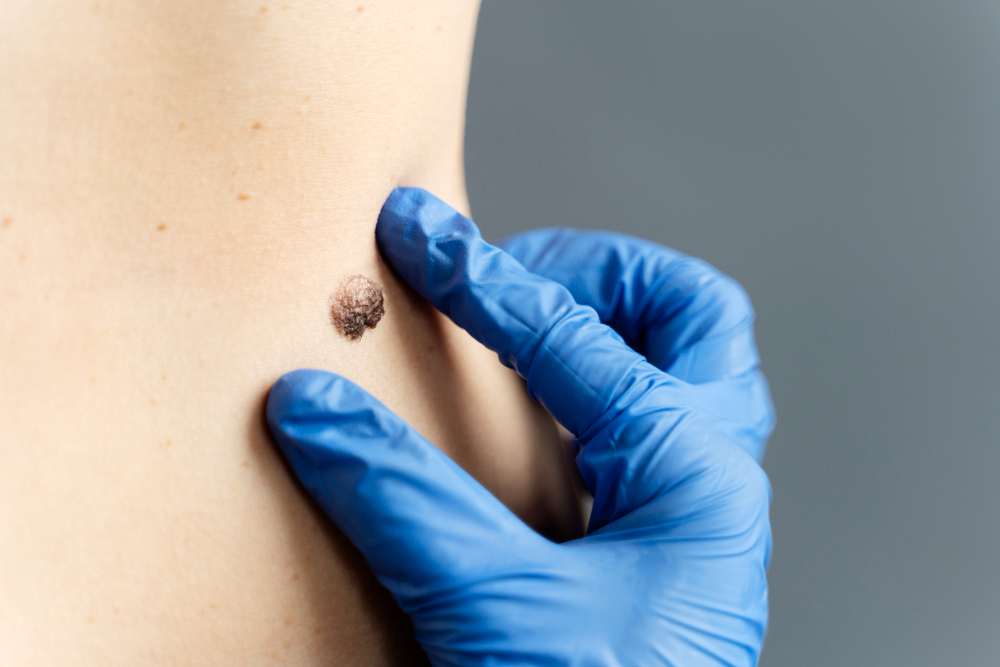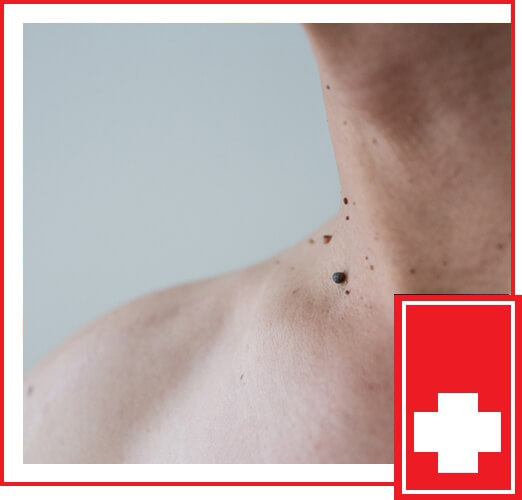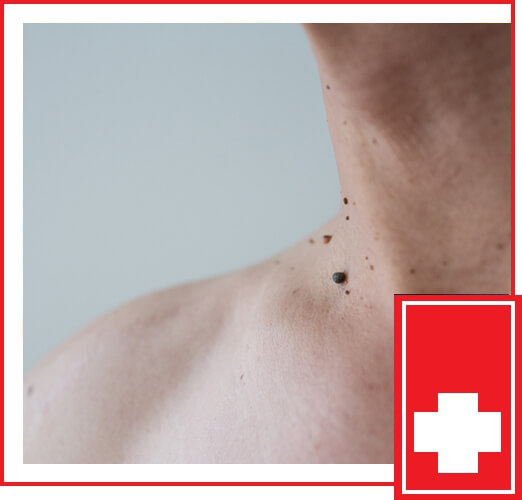Yes, urgent care facilities can perform wart removal through cryosurgery or other methods. However, it’s essential to consult the specific urgent care facility for their wart removal services and procedures.
Wart removal services are widely available at urgent care facilities, offering convenient and efficient treatment options. These facilities typically utilize cryotherapy, a freezing technique, to remove warts. While most warts are harmless, they can be bothersome and unsightly, prompting individuals to seek prompt treatment.
Urgent care centers provide a convenient option for individuals seeking wart removal, offering effective treatment options to alleviate discomfort and remove the growths. Additionally, insurance may cover medically necessary wart removal procedures, making urgent care a viable and accessible option for wart removal.

Credit: www.fastmed.com
Wart Removal At Urgent Care
Warts can be a bothersome and unsightly skin condition that many people want to get rid of as quickly as possible. If you have a wart and are considering seeking treatment at an urgent care facility, you may be wondering if they can help. In this article, we will explore the types of warts that can be treated at urgent care and the procedures they typically use for wart removal.
Types Of Warts Treated
Urgent care facilities are equipped to handle various types of warts. Some common types of warts that can be treated include:
- Common warts: These warts usually appear on the hands and fingers and have a rough, raised texture.
- Plantar warts: Found on the soles of the feet, these warts can be painful and have a hard, thickened skin.
- Flat warts: These warts are small and smooth and often appear in clusters on the face, arms, or legs.
- Genital warts: Urgent care facilities may also offer treatment for genital warts, which are caused by certain strains of the human papillomavirus (HPV).
Urgent Care Procedures
When you visit an urgent care facility for wart removal, the medical professionals there may employ various procedures depending on the type and location of the wart. Some common wart removal procedures performed at urgent care include:
- Cryotherapy: This involves freezing the wart with liquid nitrogen to destroy the affected tissue.
- Electrocautery: In this procedure, an electric current is used to burn off the wart.
- Topical medications: Urgent care providers may prescribe or apply topical medications that help to gradually remove the wart over time.
- Excision: For larger or more stubborn warts, excision may be necessary. This involves cutting out the wart and stitching the wound closed.
It is important to note that not all urgent care facilities may offer all of these procedures. It is best to call ahead and inquire about the specific wart removal services they provide.
In conclusion, if you have a wart and are considering seeking treatment at an urgent care facility, rest assured that they can often help. They are equipped to handle various types of warts and may utilize procedures such as cryotherapy, electrocautery, topical medications, or excision to remove the wart. Remember to consult with a medical professional to determine the best course of action for your specific situation.
Understanding Wart Removal
Urgent care facilities can provide wart removal, including cryosurgery, to freeze off the wart. This quick and effective treatment can be a convenient option for those seeking professional assistance in wart removal. With the ability to evaluate and perform treatments, urgent care can offer relief from bothersome warts.
Understanding Wart Removal Warts are benign skin growths caused by the human papillomavirus (HPV). While they are generally harmless, they can be unsightly and sometimes painful. Warts can appear on any part of the body and are often found on the hands, feet, and face. Wart removal can be done through various methods, including home treatments and professional care. If you’re considering wart removal, it’s essential to understand the options available and their benefits.Home Treatments Vs. Professional Care
Home treatments for wart removal include over-the-counter medications, salicylic acid plasters, and duct tape occlusion therapy. These methods are often less effective and may take a longer time to show results. Professional wart removal, on the other hand, is performed by healthcare providers such as dermatologists or urgent care centers. They offer advanced treatments such as cryotherapy, laser surgery, and surgical excision, which are more effective in removing warts.Benefits Of Professional Wart Removal
Professional wart removal offers several benefits, including:- Effective removal of warts using advanced medical techniques
- Quick and targeted treatment, reducing the time taken for wart removal
- Expert evaluation of the wart’s condition to determine the most suitable treatment
- Reduced risk of scarring and infection compared to home treatments
Cryotherapy For Warts
Urgent care centers can evaluate your skin and offer cryotherapy, also known as cryosurgery, as a treatment option for wart removal. This procedure freezes the wart, causing it to scab over and eventually fall off.
How Cryotherapy Works
Cryotherapy is a common and effective treatment option for removing warts. It involves freezing the wart using liquid nitrogen or another freezing agent. When the freezing agent is applied to the wart, it causes the skin cells to freeze and die. This freezing process destroys the blood vessels that supply the wart, leading to its eventual removal. During the cryotherapy procedure, the freezing agent is directly applied to the wart using a cotton swab or a specialized instrument. The freezing sensation may cause some discomfort, but it is generally well-tolerated by patients. The duration of the treatment depends on the size and location of the wart, but it typically only takes a few minutes. After cryotherapy, the frozen wart may turn white and develop a blister. Over time, the blister will dry up and the wart will gradually fall off. It is important not to pick at the blister or the wart, as this can lead to infection or scarring. Most warts require multiple cryotherapy sessions for complete removal, with each session spaced a few weeks apart.Post-procedure Care
After undergoing cryotherapy for wart removal, it is important to follow some post-procedure care instructions to ensure proper healing and minimize the risk of complications. Here are some tips to help you take care of your skin after cryotherapy: 1. Keep the treated area clean and dry: Avoid getting the treated area wet for at least 24 hours after the procedure. This includes avoiding swimming, taking baths, or using hot tubs. Gently wash the area with mild soap and water, pat it dry, and apply an over-the-counter antibiotic ointment. 2. Protect the treated area: Cover the treated area with a bandage or a non-stick dressing to protect it from friction, irritation, and contamination. Change the bandage daily or as needed to keep the area clean. 3. Avoid picking or scratching: It is important to resist the temptation to pick at the blister or the scab that forms after cryotherapy. Picking can increase the risk of infection and delay the healing process. Let the blister or scab heal naturally. 4. Avoid sun exposure: Protect the treated area from direct sunlight and UV rays. Apply sunscreen with at least SPF 30 before going outside and wear protective clothing, such as hats and long sleeves, to shield the area from the sun. 5. Follow-up appointments: Schedule follow-up appointments with your healthcare provider as recommended. They will assess the progress of the treatment and determine if additional cryotherapy sessions are needed. Cryotherapy for wart removal is a safe and effective treatment option. By following these post-procedure care instructions, you can help ensure a successful outcome and minimize the risk of complications. If you have any concerns or notice any unusual symptoms during the healing process, don’t hesitate to contact your healthcare provider.
Credit: docsmedicalgroup.com
Cost Considerations
When it comes to removing a wart at an urgent care facility, it’s important to consider the cost implications. While urgent care clinics offer convenient and efficient treatment options for wart removal, the cost of the procedure can vary depending on several factors. This section will explore the cost considerations associated with wart removal at urgent care.
Insurance Coverage For Wart Removal
If you have health insurance, it’s essential to understand what coverage your policy provides for wart removal. In many cases, insurance plans cover wart removal procedures, especially if they are medically necessary to treat pain, infection, or reduce the risk of serious health conditions. However, it’s important to note that insurance coverage may vary depending on the specific insurance provider and policy terms.
If you’re considering visiting an urgent care facility for wart removal, it’s recommended to check with your insurance provider beforehand to determine the extent of coverage. This can help you understand any potential out-of-pocket costs you may be responsible for.
Out-of-pocket Costs
In addition to insurance coverage, there may be out-of-pocket costs associated with wart removal at urgent care. These costs can include co-pays, deductibles, or any fees not covered by your insurance plan. The specific out-of-pocket expenses will depend on your insurance coverage and the urgent care facility you visit.
To get a better idea of the potential out-of-pocket costs, it’s advisable to contact the urgent care clinic directly and inquire about their pricing for wart removal. They can provide you with an estimate of the costs involved and any additional fees you may incur.
It’s important to note that if you don’t have insurance or if wart removal is considered a cosmetic procedure, you may be responsible for the full cost of the treatment. In such cases, urgent care facilities may offer self-pay options or payment plans to make the treatment more affordable.
In conclusion, before making a decision about wart removal at an urgent care facility, it’s crucial to consider the cost implications. Understanding your insurance coverage and potential out-of-pocket costs can help you make an informed decision and ensure that the treatment is affordable for you.
Alternative Wart Removal Techniques
Urgent care facilities can remove warts using cryosurgery, also known as cryotherapy. This technique freezes the wart, causing it to scab over and eventually fall off. If you have a wart that is bothersome or painful, urgent care can provide effective treatment options to remove the growth and alleviate discomfort.
Alternative Wart Removal Techniques Warts are a common skin condition that can occur on any part of the body. While cryotherapy is a popular method for removing warts, there are alternative wart removal techniques that can be just as effective. In this article, we’ll explore some of these alternative methods, including laser surgery and topical treatments.Laser Surgery
Laser surgery is a popular method for removing warts. This procedure involves using a laser to burn off the wart tissue. It is a quick and efficient procedure that can be done in a doctor’s office. Laser surgery is often used for warts that are difficult to remove or are located in hard-to-reach areas. The downside to this method is that it can be expensive and may require multiple treatments.Topical Treatments
Topical treatments are another alternative method for removing warts. These treatments involve applying a medication directly to the wart. The medication works by causing the wart tissue to break down and eventually fall off. There are several types of topical treatments available, including salicylic acid and imiquimod cream. These treatments are often less expensive than laser surgery and can be done at home. However, they may take longer to work and may not be as effective for larger warts. In conclusion, while cryotherapy is the most common method for removing warts, there are alternative wart removal techniques that can be just as effective. Laser surgery and topical treatments are two such methods. If you are considering wart removal, speak to your doctor about which method is best for you.What To Expect At The Urgent Care
Urgent care centers can remove warts through cryosurgery, also known as cryotherapy. The medical team will evaluate the skin’s condition to determine the best course of treatment. Urgent care centers like CareNow® Urgent Care in Austin, Texas, offer wart removal services.
Consultation And Diagnosis
When you visit an urgent care clinic for wart removal, you can expect to receive a consultation and diagnosis from a medical professional. The healthcare provider will examine the wart and determine the best course of treatment. In some cases, the provider may recommend cryosurgery, also known as cryotherapy, to remove the wart.Same-day Treatment Possibilities
If you are looking for same-day treatment for your wart, urgent care may be the right choice. Many urgent care clinics offer cryotherapy for wart removal, which can be done on the same day as your consultation and diagnosis. This treatment involves freezing the wart with liquid nitrogen, causing it to fall off within a few weeks. In addition to cryotherapy, some urgent care clinics may also offer other wart removal treatments, such as laser surgery or surgical excision. However, it is important to note that not all urgent care clinics offer these treatments, and they may require a referral to a dermatologist or specialist. Overall, visiting an urgent care clinic for wart removal can be a convenient and efficient option. With a consultation and diagnosis from a medical professional, and same-day treatment possibilities, you can get rid of your wart quickly and easily.Choosing The Right Urgent Care
Urgent care centers can perform cryosurgery, also known as cryotherapy, to remove warts if needed. This treatment freezes the wart, causing it to scab over and fall off. It’s a safe and effective option for wart removal, and urgent care clinics can provide this service at a lower cost than a visit to a dermatologist.
Criteria For Selecting A Clinic
When it comes to choosing the right urgent care for wart removal, there are several important criteria to consider. Making an informed decision ensures that you receive safe and effective treatment for your wart. Here are some key factors to keep in mind when selecting a clinic: 1. Expertise: Look for a clinic that specializes in dermatology or has experienced medical professionals who are trained in wart removal. This ensures that you receive proper care and treatment. 2. Reputation: Check online reviews and ratings to gauge the reputation of the clinic. Positive feedback from previous patients is a good indication of quality service. 3. Availability: Consider the clinic’s hours of operation and availability. Urgent care centers with extended hours or weekend availability can provide more flexibility in scheduling your wart removal appointment. 4. Insurance Coverage: Check if the clinic accepts your insurance plan. Wart removal can be a medical necessity in certain cases, and having insurance coverage can help reduce the cost. 5. Location and Accessibility: Choose a clinic that is conveniently located near you. Accessibility is important, especially if you need to make multiple visits for follow-up treatments or check-ups. 6. Technology and Equipment: A well-equipped clinic with modern technology can offer advanced treatment options for wart removal. This ensures that you receive the most effective and up-to-date care. 7. Cost: Compare the cost of wart removal services at different clinics. While price should not be the sole determining factor, it is important to consider your budget and find a clinic that offers competitive pricing.Locations And Accessibility
When it comes to wart removal, the location and accessibility of the urgent care clinic are key factors to consider. Having a clinic that is conveniently located and easily accessible can make the process more convenient and less stressful for you. Here are some points to consider regarding locations and accessibility: 1. Proximity: Choose a clinic that is close to your home or workplace. This reduces travel time and makes it easier to fit appointments into your schedule. 2. Transportation: Consider the availability of public transportation or parking facilities near the clinic. This ensures that you have convenient options for reaching the clinic. 3. Extended Hours: Look for urgent care clinics with extended hours of operation. This allows you to schedule appointments outside of regular working hours, making it easier to fit in your wart removal treatment. 4. Online Booking: Check if the clinic offers online booking for appointments. This saves time and allows you to schedule your wart removal treatment at your convenience. 5. Multiple Locations: If there are multiple urgent care clinics in your area, consider choosing one that has several locations. This gives you more options and flexibility in case you need to visit a different clinic for follow-up treatments or check-ups. By considering these criteria and evaluating the locations and accessibility of different urgent care clinics, you can choose the right clinic for your wart removal needs. Remember to prioritize expertise, reputation, availability, insurance coverage, technology, and cost to ensure you receive safe and effective treatment.Aftercare And Prevention
Urgent care centers can remove warts using cryosurgery, also known as cryotherapy. The medical team can evaluate the skin’s condition and perform the procedure if necessary, effectively eliminating the wart. Preventative measures and aftercare advice may also be provided to ensure the wart does not recur.
Post-removal Care Tips
After having a wart removed at an urgent care center, it’s important to follow proper post-removal care tips to ensure proper healing and prevent infection. Here are some tips to keep in mind:- Keep the area clean and dry: After the wart removal procedure, it’s crucial to keep the treated area clean and dry. This will help prevent any bacteria from entering the wound and causing an infection. Use mild soap and water to gently cleanse the area, and pat it dry with a clean towel.
- Apply an antibiotic ointment: To further protect the treated area and promote healing, apply an over-the-counter antibiotic ointment. This will help prevent infection and keep the skin moisturized. Be sure to follow the instructions on the packaging for proper application.
- Avoid picking or scratching the area: It’s natural to feel some itching or discomfort as the wound heals, but it’s important to resist the urge to pick or scratch at the area. This can introduce bacteria and delay the healing process. If necessary, you can apply a soothing lotion or use a cold compress to alleviate any itching.
- Protect the area from sun exposure: After wart removal, the skin may be more sensitive to sunlight. To prevent any potential damage or discoloration, be sure to protect the treated area from direct sunlight. Apply a broad-spectrum sunscreen with SPF 30 or higher, and consider wearing a hat or using an umbrella when outdoors.
Preventing Wart Recurrence
While urgent care can effectively remove a wart, it’s important to take steps to prevent its recurrence. Here are some tips to help you avoid future wart outbreaks:- Practice good hygiene: Warts are caused by a viral infection, so practicing good hygiene is essential in preventing their spread. Be sure to wash your hands regularly with soap and water, especially after touching warts or coming into contact with surfaces that may be contaminated.
- Avoid sharing personal items: Warts can be easily transmitted through direct contact or sharing personal items such as towels, razors, or shoes. To reduce the risk of spreading or acquiring warts, avoid sharing these items with others.
- Keep your skin dry: Warts thrive in warm and moist environments. To prevent their growth and recurrence, keep your skin clean and dry, especially in areas prone to sweating, such as your feet and hands. Use talcum powder or antiperspirants to help absorb excess moisture.
- Boost your immune system: A strong immune system can help prevent recurrent warts. Make sure to maintain a healthy lifestyle by eating a balanced diet, getting regular exercise, and managing stress. Adequate sleep and staying hydrated are also essential for a strong immune system.
- Consider vaccination: If you’re prone to warts or have had recurrent outbreaks, talk to your healthcare provider about the possibility of getting vaccinated against the human papillomavirus (HPV). Vaccination can help protect against certain strains of HPV that cause warts.

Credit: www.wilmingtonurgentclinic.com
Frequently Asked Questions
Can Urgent Care Freeze Off A Wart?
Yes, urgent care can freeze off a wart. The medical team can evaluate the skin’s condition and perform cryosurgery (also known as cryotherapy) for wart removal, if necessary. Cost and insurance coverage may vary depending on the situation. It’s recommended to see a dermatologist if you have trouble getting rid of warts or if they are causing pain or discomfort.
How Much Does It Cost To Get A Wart Removed?
Wart removal costs vary, but typically range from $100 to $300. It may be covered by insurance.
Do You Need A Doctor To Remove A Wart?
Yes, you need a doctor to remove a wart. Dermatologists have various treatments for warts depending on the patient’s age, health, and the type of wart. If you cannot get rid of the warts, they hurt, or you have many warts, it is recommended to see a dermatologist.
Does Insurance Usually Cover Wart Removal?
Insurance coverage for wart removal depends on medical necessity. Cryotherapy may be covered if needed to treat pain, infection, or serious health conditions. Cosmetic cryotherapy is typically not covered by insurance.
Conclusion
Overall, urgent care centers are equipped to handle a variety of medical conditions, including wart removal. If you have a wart that is causing discomfort or is unsightly, urgent care may be a convenient and affordable option for treatment. The medical team can evaluate your skin’s condition and determine the best course of action, including cryotherapy or other treatments.
While insurance may cover medically necessary wart removal, it’s always a good idea to check with your provider beforehand. Don’t let a pesky wart keep you from feeling your best – visit your local urgent care center for expert care.
